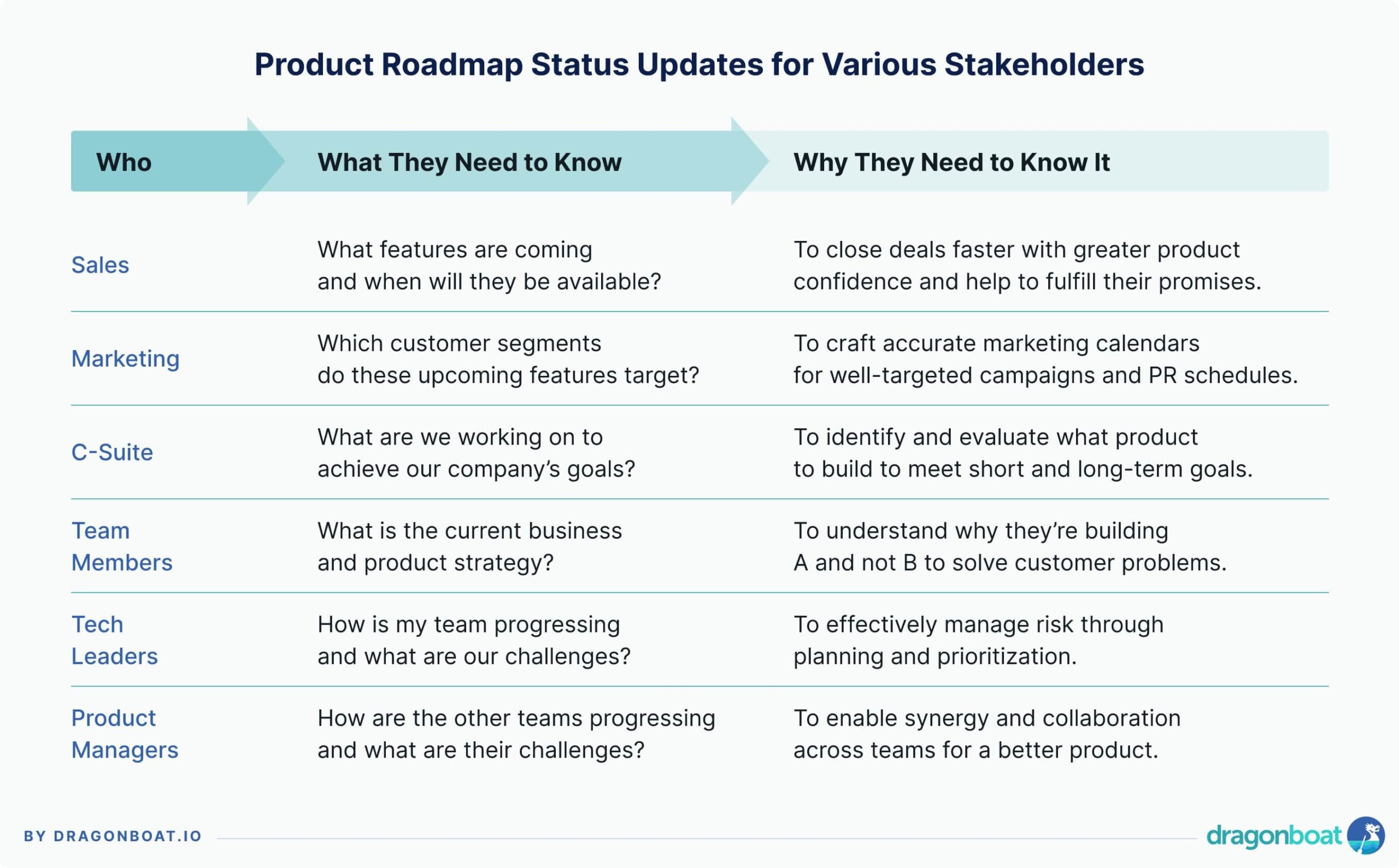“How do you provide effective product roadmap status updates for your diverse stakeholders?”
A PM recently came to me on the verge of burnout from too many status meetings and never-ending decks for her globally distributed teams in different functions.
As someone leading program and product management for companies big and small with teams in over 100 countries, I have also had my fair shares of status updates and meetings.
Here are a few tips to make it easier:
- Know your audience’s unique needs
- Build a communication cadence with the right frequency and format
- Invest in a source of truth system
- Automate multi-dimensional, multi-horizon, multi-channel updates
Let’s look at them in more detail.
First, it’s important to recognize that knowing where we are now and where we are going is essential for any organization. Ensuring the right type of product roadmap information for the right audience not only enables success for your organization, it actually elevates your role.
How? The right information in the right format enables your audience to achieve their goals, which makes you invaluable to their success.
1. Know Your Audience’s Unique Needs
Above all, we must understand the purpose of roadmap visibility. Everyone involved in suggesting, prioritizing, designing, building, shipping, selling, and supporting products needs to know the state of roadmap. They need to know what product teams are (and are not) building, when features will be available (at least from a technical perspective), how the product should be used and communicated, and so forth. So your stakeholders can make effective, outcome-driven adjustments to their work.
A product and engineering organization typically has various information needs from the following stakeholders:

2. Build a Communication Cadence with the Right Frequency and Format
Instead of having a default weekly or bi-weekly roadmap status update meeting, set a meeting cadence more appropriate to the velocity of your product roadmaps – that is, do you have major features and marketing updates on a weekly, monthly or maybe even quarterly basis? This should help determine the frequency of stakeholder updates in a meeting format.
What about between meetings? People can’t be in the dark for 2 week or even 2 months, right?
That’s where a source of truth self-serviced format applies to your diverse stakeholders.
3. Adopt a Source of Truth System
Product managers are often the connectors of both sides, but they can also quickly turn into bottlenecks.
“Single source of truth” is an information systems concept that ensures everyone in an organization uses the same data when making business decisions. Using it for roadmap visibility allows two things:
- Asynchronous access to the latest information
- Live status updates in dynamic formats
By automating updates directly from your team’s work, you not only streamline the PM’s day but eliminate both human error and information silos.
Having a source of truth also facilitates top-down visibility that is crucial to teams (why A and not B). Knowing product–strategies and goals helps teams to maintain alignment. Instead of trying to find what’s buried in emails or PowerPoint decks, an always-on source of truth connecting Strategies and Execution empowers engineers to build with the right context.
4. Automate Multi-Dimensional, Multi-Horizon, Multi-Channel Updates
While a source of truth provides bottom-up and top-down visibility, we don’t have to stop there. Applying portfolio management on top of that grants tech leaders an even wider view to spot opportunities or catch mistakes. Your product is your portfolio, which means you have more than just a list of features to work with— there are the goals dimension, the customer segments dimension, and many others that go into making outcome-based decisions.
Here’s an example: We had a Product Manager whose team was focused on retention features, everything seemed fine. It was only after she adopted a multi-dimensional view that she noticed “retention” was, in fact, last quarter’s focus!
Additionally, roadmap changes happen all the time. Your teams and stakeholders need up-to-date information to fully understand the impact of those changes to better plan their work, and minimizes disruption for both internal teams and customers.
The speed and quality of available information directly impacts the speed and quality of the decisions made so make your updates count!



